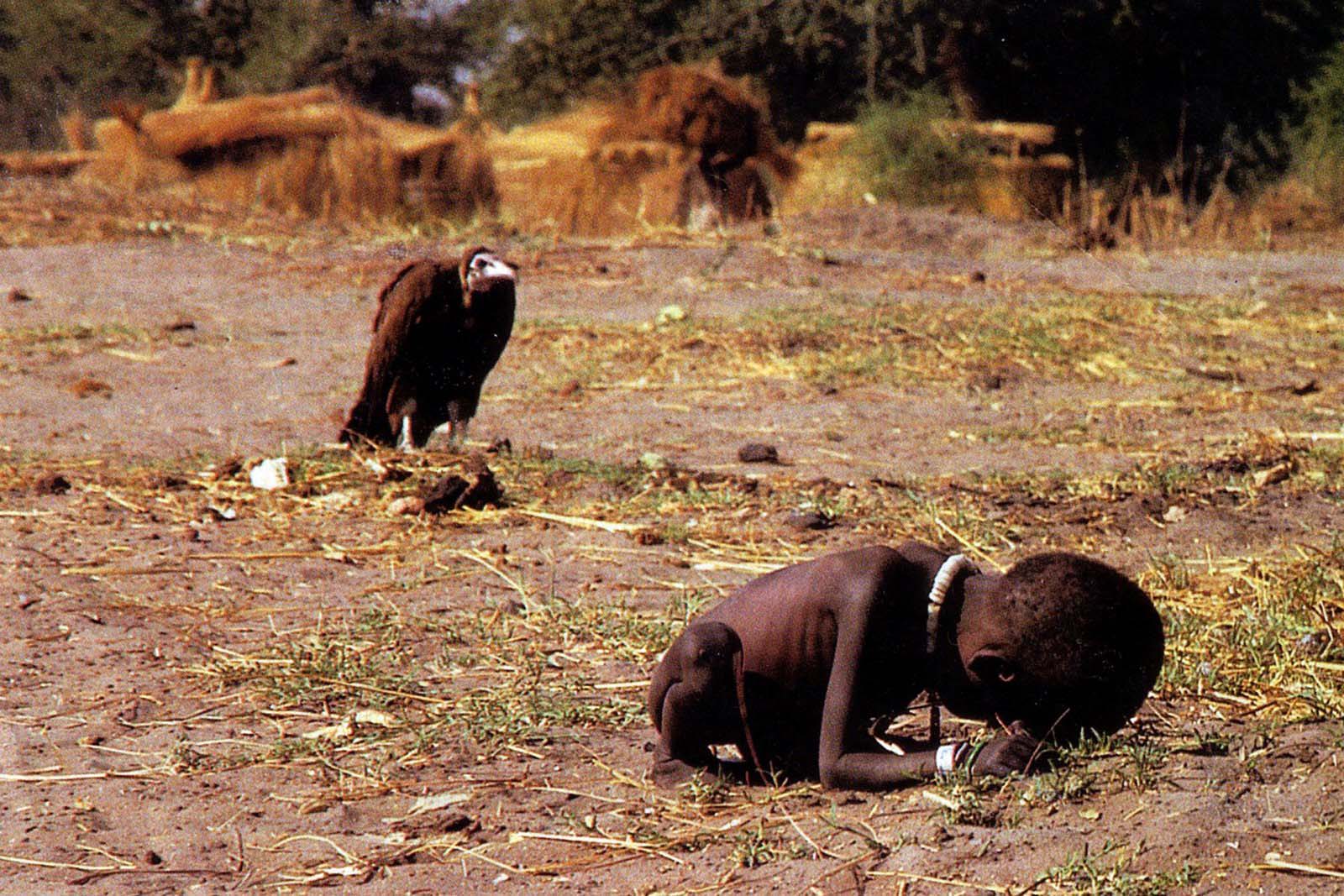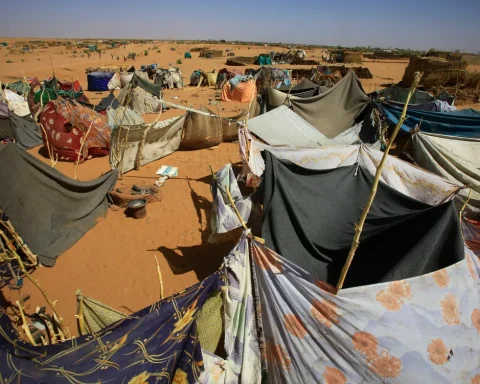
Kevin Carter, a photojournalist South African photojournalist, had travelled down to Sudan on an endeavour in March 1993 when he came across a young girl who had stopped to rest on the way to a United Nations feeding centre where a vulture was waiting patiently nearby the almost dying child.
While the parents of the children were engaged and scrapping for food from the plane, they left the children only for a while to gather food for the starving children. This was the exact circumstance surrounding the girl in the photo taken by Kevin Carter. As the young girl lay low and alone, the vulture landed behind her. Carter, who had been watching the scene for a while, approached cautiously to prevent the bird from flying away in freight. At precisely 10 meters, he positioned and captured a few photographs before scaring the bird away.
At this point, Carter was probably not yet aware that he had shot one of the most controversial photographs in the history of photojournalism.
These photos were then sold to The New York Times, where it was displayed on March 26, 1993, for the first time. The picture drew so much attention as over a hundred people reached out to the news outlet to confirm the survival of the photographed child. This prompted the newspaper to run a special editor’s note which read that the girl was strong enough to walk away from the vulture and also mentioned her current state was unknown.
This drew countless criticisms and questions as to why he did not offer help to the dying young girl, instead using her as a means for recognition. The St. Petersburg Times in Florida wrote: “The man adjusting his lens to take just the right frame of her suffering, might just as well be a predator, another vulture on the scene”.
He was criticized not just for taking the photographs but for not driving the vulture away immediately and also for the fact he did not assist the starved dying child directly as he mentioned that he left her to continue the March to the United Nations feeding centre herself. However, Carter was working at a time when photojournalists were prohibited from getting in close contact with these victims of famine for fear of contracting an unknown disease. Carter roughly calculated that about twenty people died each hour at the food centre.
Kevin Carter, in 1994, won the Pulitzer prize for the disturbing photograph of a Sudanese child being stalked by a vulture. That same year, he committed suicide.

